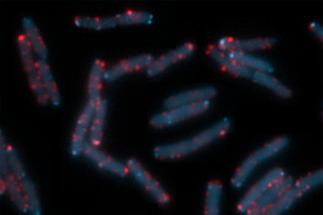Microbial Networks
Prof. Dr. Victor Sourjik
Research area
We are interested in a broad range of topics in quantitative microbiology using prokaryotic (primarily the bacterium E. coli) and eukaryotic (budding yeast S. cerevisiae) model systems. Our main focus is on the quantitative analysis of molecular and physiological functions of cellular networks in microorganisms. We use quantitative fluorescence microscopy and other techniques to investigate the ability of these networks to sense and integrate multiple environmental and internal stimuli, including those involved in host-microbe interactions (i), to function reliably in a noisy cellular environment (ii), and to adjust their function to changing environmental conditions through gene regulation and evolutionary adaptation (iii). We further aim to better understand the relationship between single-cell and collective behaviors within microbial communities, including cell differentiation, communication and community evolution. In most of our work, we combine experiments with theoretical analysis and computational modeling to elucidate principles common to different biological systems. Finally, we explore how cellular functions can be rationally redesigned for potential bioengineering applications.
Selected recent publications
Lisevich, I.; Colin, R.; Yang, H. Y.; Ni, B.; Sourjik, V. (2025) Physics of swimming and its fitness cost determine strategies of bacterial investment in flagellar motility. Nature Communications 16 (1), 1731 [link]
Scarinci, G.; Ariens, J.-L.; Angelidou, G.; Schmidt, S.; Glatter, T.; Paczia, N.; Sourjik, V. (2024) Enhanced metabolic entanglement emerges during the evolution of an interkingdom microbial community. Nature Communications 15 (1), 7238 [link]
Teteneva, N.; Sanches-Medeiros, A.; Sourjik, V. (2024) Genome-wide screen of genetic determinants that govern Escherichia coli growth and persistence in lake water. The ISME Journal 18 (1), wrae096 [link]
Ross, P. A.; Xu, W.; Jalomo-Khayrova, E.; Bange, G.; Gumerov, V. M.; Bradley , P. H.; Sourjik, V.; Zhulin , I. B. (2024) Framework for exploring the sensory repertoire of the human gut microbiota. mBio 15 (6), e01039-24 [link]
Xu, W., Cerna-Vargas, J. P., Tajuelo, A., Lozano Montoya, A., Kivoloka, M., Krink, N., Monteagudo-Cascales, E., Matilla, M. A., Krell, T. & Sourjik, V. (2023) Systematic mapping of chemoreceptor specificities for Pseudomonas aeruginosa. mBio doi: 10.1128/mbio.02099-23. Online ahead of print [link]
Lamprecht, O., Ratnikava, M., Jacek, P., Kaganovitch, E., Büttner, N., Fritz, K., Biazruchka, I., Köhler, R. C., Pietsch, J. & Sourjik, V. (2023) Regulation by cyclic di-GMP attenuates dynamics and enhances robustness of bimodal curli gene activation in Escherichia coli. PLoS genetics 19(5):e1010750. doi: 10.1371/journal.pgen.1010750 [link]
Bi, S., Kargeti, M., Colin, R., Farke, N., Link, H. & Sourjik, V. (2023) Dynamic fluctuations in a bacterial metabolic network. Nature communications 14(1):2173. doi: 10.1038/s41467-023-37957-0. [link]
Laganenka, L., Lee, J.-W., Malfertheiner, L., Dieterich, C. L., Fuchs, L., Piel, J., von Mering, C., Sourjik, V., Hardt, W.-D. (2022) Chemotaxis and autoinducer-2 signalling mediate colonization and contribute to co-existence of Escherichia coli strains in the murine gut. Nat Microbiol, doi: 10.1038/s41564-022-01286-7 [link]
Ni, B., Colin, R., Sourjik, V. (2021) Production and Characterization of Motile and Chemotactic Bacterial Minicells, ACS Synth Biol.;10(6):1284-1291. [link]
Anders, A., Colin, R., Banderas, A., Sourjik, V. (2021) Asymmetric mating behavior of isogamous budding yeast. Sci Adv, 7(24):eabf8404. [link]









